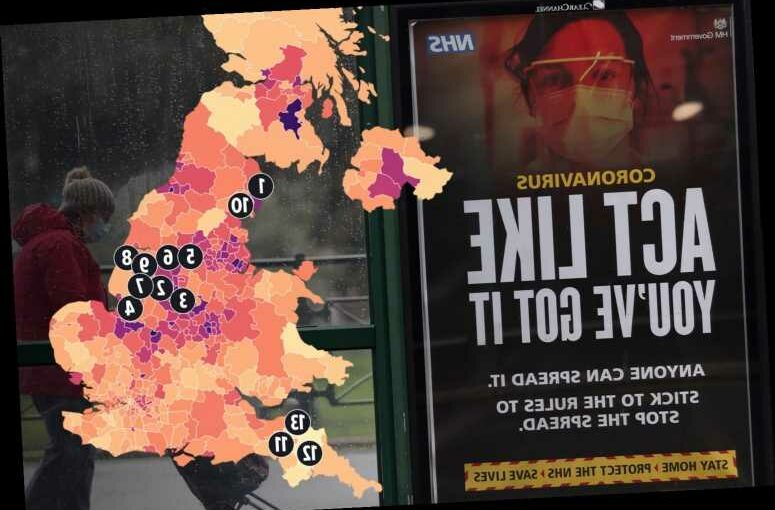CASES of the coronavirus are still rising in 13 areas in England and this interactive map reveals if your local authority is on the list.
Data from Public Health England (PHE) states that over the last seven days cases have fallen in 96 per cent of places.
🦠 Read our coronavirus live blog for the latest news & updates…
The fall in cases comes as Prime Minister Boris Johnson is set to launch an advertising blitz which will urge Brits to give it one more push in the third national coronavirus lockdown.
Mr Johnson will reveal his roadmap out of restrictions on February 22 and the new adverts will urge people to stay at home in order to get Brits over the line when it comes to curbing infection rates.
Mr Johnson vowed to be driven by data not dates in his “cautious and prudent” lifting of Covid restrictions, starting on March 8 with reopening schools.
He has repeatedly stressed that restrictions will be eased cautiously – and urged Brits to show patience in the months ahead.
Data from NHS Test and Trace also suggests that cases are back to levels seen before the peak in January.
The number of people testing positive is now only nine per cent
higher than in the week ending 2 December 2020.
In January infections peaked and more than 300,000 people tested positive in a week.
However in October, before the second national coronavirus lockdown was introduced in November – weekly cases were at around 100,000 a week and the latest data shows that they are at 106,474.
While infections plunge across the country, there are still 13 areas where cases are on the rise.
In the seven days up to February 14, Copeland in Cumbria has seen cases jump from 180.4 per 100,000 to 234.7.
A spokesperson for the local council this week said that the increase was mainly down to a few small outbreaks that were being "closely monitored and contained".
Despite this Copeland Borough Council's Carl Walmsley suspected that people in the area had "let their guard down".
He said: "I cannot stress enough that this is nowhere near over, we need to remain vigilant and follow guidelines at all times."
Newark and Sherwood in Nottinghamshire has also seen an uptick in cases, going from 221.4 to 233.6.
This morning PHE confirmed another 45 cases in the area, and sadly reported that two residents of the local area had died within 28 days of contracting the virus.
North West Leicestershire has witnessed a spike in cases from 190.1 to 215.2 and since the start of the pandemic the area has seen 5,265 cases.
Boston in Lincolnshire also saw a jump, going from 171 to 198.1, as well as Tameside in Greater Manchester – which has seen cases go from 179.3 per 100,000 to 196.9.
Cases in Doncaster in Yorkshire have also increased from 186 to 187.2 and since the start of the pandemic, Doncaster Council has reported 20,365 cases.
Elsewhere and Lincoln has also witnessed an increase, going from 100.7 to 116.8 and North East Lincolnshire has also jumped from 99.6 to 114.7.
Also in the nearby area, West Lindsey in Lincolnshire has seen a rise from 107.7 to 108.7.
Infections have also risen in South Lakeland in Cumbria, jumping from 73.3 to 92.3.
Looking towards the South West of England and there are three local authorities that have seen a rise in cases.
Exeter has jumped from 37.3 to 68.5, East Devon from 54 to 60.8 and North Devon to 23.7 to 27.8.
While PHE shows a rise in the cases in the 13 areas above, some of the most infected local authorities in the country have seen a fall in infections.
Corby in Northamptonshire has the highest rate in England, with 229 new cases recorded in the seven days to February 14 – the equivalent of 317.1 cases per 100,000 people.
This is down from 429.3 cases per 100,000 people in the seven days to February 7.
Middlesbrough has the second highest rate, down from 382.3 to 289.4, with 408 new cases.
Sandwell in the West Midlands is in third place, down from 383.3 to 271.0, with 890 new cases.
Source: Read Full Article



